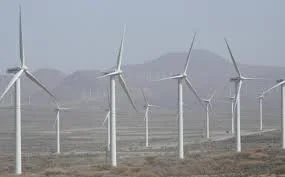 Kenya has officially launched a new large-scale wind power project, marking a significant milestone in the country’s green energy ambitions. The initiative aims to increase the country’s renewable energy output, contributing to Kenya’s goal of achieving 100% renewable energy reliance by 2030.
Kenya has officially launched a new large-scale wind power project, marking a significant milestone in the country’s green energy ambitions. The initiative aims to increase the country’s renewable energy output, contributing to Kenya’s goal of achieving 100% renewable energy reliance by 2030.
The launch, held near Nairobi, saw government officials, energy leaders, and local stakeholders emphasize the project’s role in reducing reliance on fossil fuels and supporting Kenya’s sustainable development agenda. Operated by the Kenya Electricity Generating Company (KenGen), this wind power addition will join other green projects in the country’s renewable energy portfolio, which includes solar, hydroelectric, and geothermal sources.
The newly operational wind farm is expected to produce 310 megawatts, making it one of the largest wind projects in Africa. Located in Turkana, Kenya’s arid northwestern region, it will increase the stability of power supplies for both rural and urban regions, reduce carbon emissions, and contribute to the national energy grid. This project aligns with Kenya’s broader energy strategy and its commitment to reducing greenhouse gas emissions, showcasing the country as a leader in renewable energy on the African continent.
This development is also part of Kenya’s larger strategy to boost its renewable energy capacity by an additional 3,000 megawatts over the next decade. KenGen Acting CEO Abraham Serem confirmed that investments in wind, solar, and geothermal energy are at the forefront of this ambitious plan, positioning Kenya as a hub for green energy in Africa. He noted that the newly launched project will play a critical role in stabilizing Kenya’s energy supply and reducing operational costs associated with fossil fuels.
Kenya’s energy sector continues to benefit from international partnerships and local investment, highlighting its role in global sustainability efforts. By advancing large-scale green energy projects like this wind farm, Kenya demonstrates a sustainable path forward in addressing energy demands across the region.






















